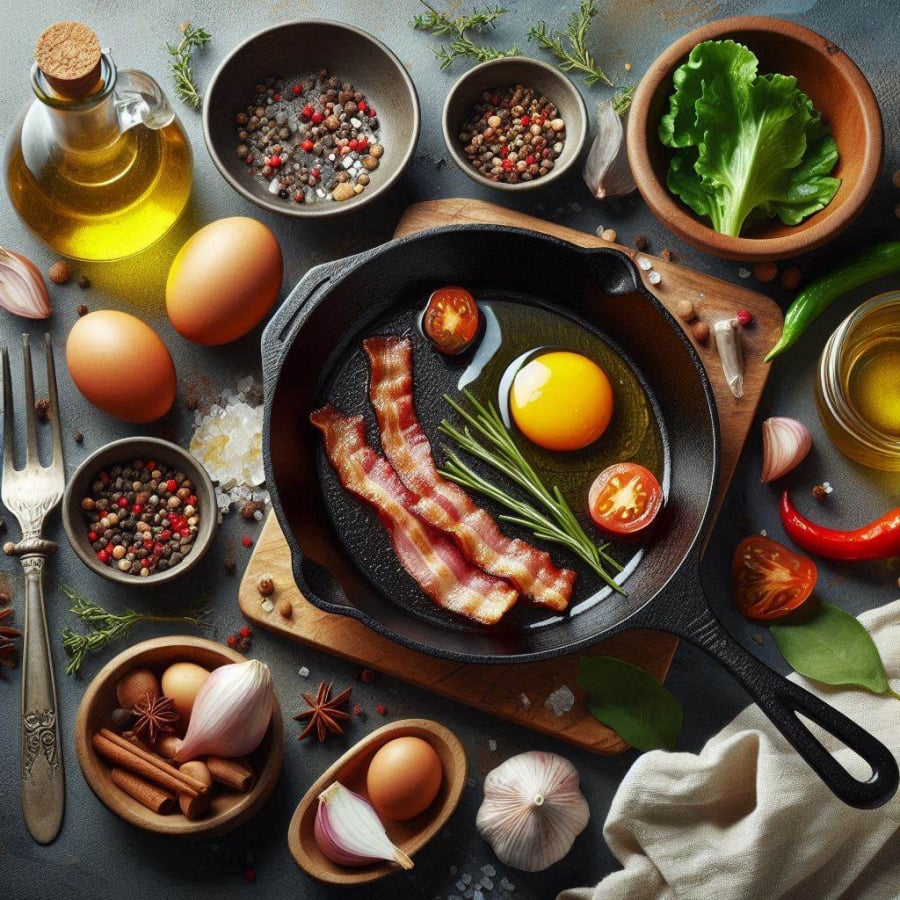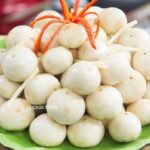With growing awareness of the potential health risks associated with non-stick cookware, many are rethinking their use of traditional cast iron and aluminum pans.
Cast iron cookware is touted for its natural non-stick capabilities without the need for chemical coatings, and it’s a great way to infuse iron into your food during the cooking process, which has numerous health benefits.
The internet is abuzz with discussions about the benefits of cast iron. Despite their heavier weight, these pans are favored by many home cooks for their ease of use and durability. Even scrubbing with steel wool doesn’t damage the pan, making cleaning a breeze.
However, when shopping for cast iron, consumers will find a wide range of options with vastly different price tags, ranging from 300,000 to 400,000 VND to extremely low-priced products. In reality, cheap cast iron pans may compromise on quality and could even be considered “toxic pans.”

The market is flooded with a variety of cast iron pans, making it hard to choose.
Why Cast Iron Pans Can Be Toxic:
Some cast iron pans on the market are produced by unreliable suppliers who use recycled scrap iron and harmful chemicals. These materials may contain heavy metals such as lead, cadmium, mercury, and arsenic, along with other toxins.
When heated to high temperatures, these toxins can leach into your food, turning your meal into a health hazard. Prolonged use of these pans has been linked to an increased risk of cancer and kidney damage.
How to Spot a Toxic Cast Iron Pan:
To avoid purchasing a low-quality cast iron pan, keep an eye out for the following signs:
Beware of Extremely Low Prices
Price is a crucial indicator of quality. If a cast iron pan is significantly cheaper than the market rate, it’s likely a red flag for poor quality. The raw materials for cast iron pans are generally expensive, so the selling price can’t be too low. Don’t compromise your health for a bargain.
Listen to the Sound
You can test the quality of a pan by gently tapping its surface. If the sound produced is harsh or grating, it may indicate inferior material. A high-quality pan will emit a resonant, pleasant sound.

A simple tap on the surface can reveal a lot about the pan’s quality.
Examine the Exterior
Reputable manufacturers typically produce cast iron pans with an attractive design, smooth finish, and authentic labels. Conversely, low-quality pans may have a rough surface or be painted to conceal defects.
Assess the Material and Weight
Quality cast iron tends to be heavy and made from premium materials. On the other hand, “toxic” pans are often lightweight and crafted from recycled, inferior materials. Weigh the pan and scrutinize the packaging for material information.
Check for Odors When Heated
A high-quality cast iron pan won’t emit strange odors or smoke when heated. If you notice unpleasant smells or unusual smoke, stop using the pan immediately and contact the seller.
Scratch Test
Gently scrape the surface with a blunt object, then wipe the affected area with a paper towel. If the paper towel shows signs of metal transfer, it’s likely a low-quality pan. Quality cast iron has a durable coating that resists scratching.
These tips will help you identify the quality of a cast iron pan. While these steps may seem simple, they require some knowledge and experience to ensure the well-being of your family.
The Secret to Perfectly Crisp and Delicious White Salted Mustard Greens: A Simple Trick to Ensure They Stay Pristine and Vangiant-Free
“Pickled cabbage is a beloved Vietnamese delicacy with a crunchy, crisp texture and a delightful tang. The secret to achieving this perfect texture and pristine white appearance lies in a special ingredient added during the pickling process. This time-honored technique ensures a truly exceptional culinary experience, and we’re here to reveal the mystery behind it.”
The Magic of Wax Paper: A Guide to Unlocking Its Versatility
Introducing the world of candle wax paper – an essential tool for baking enthusiasts and a fascinating find for the uninitiated. This special paper has unique properties that set it apart from your everyday paper, and it’s time we uncover its secrets. From the curious to the connoisseurs, let’s explore the wonders of candle wax paper and unlock its full potential.





































